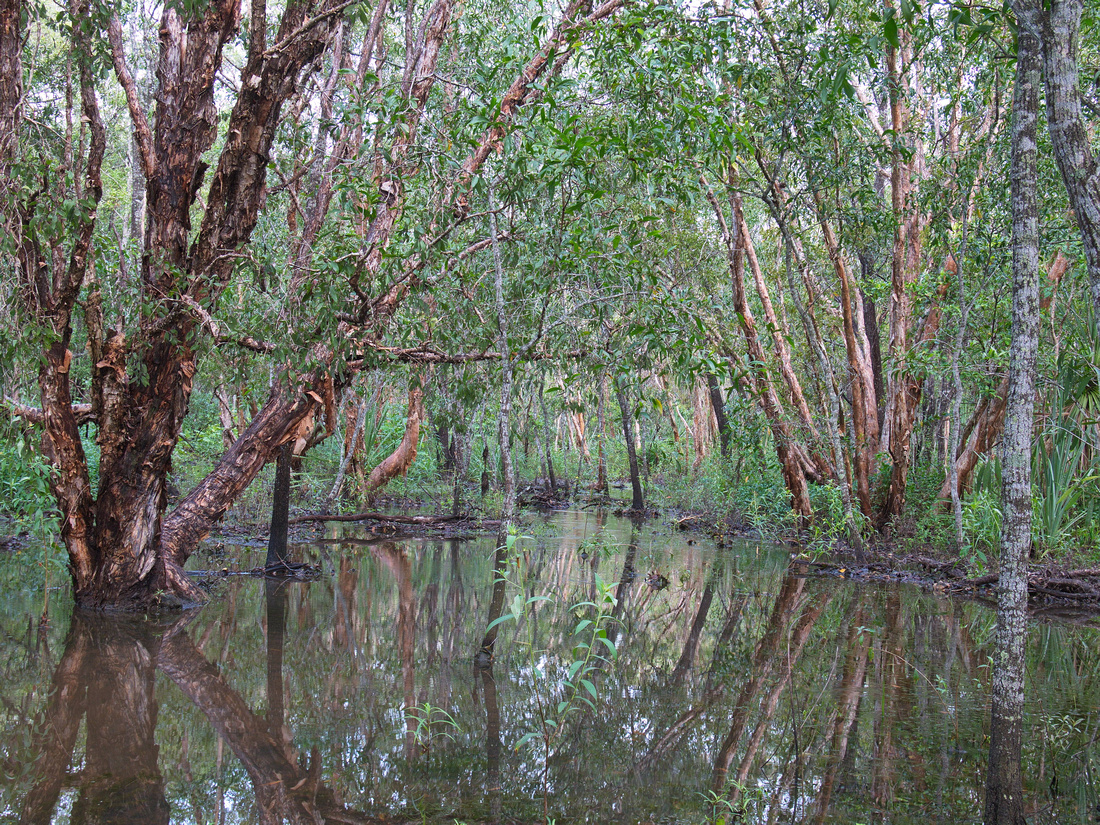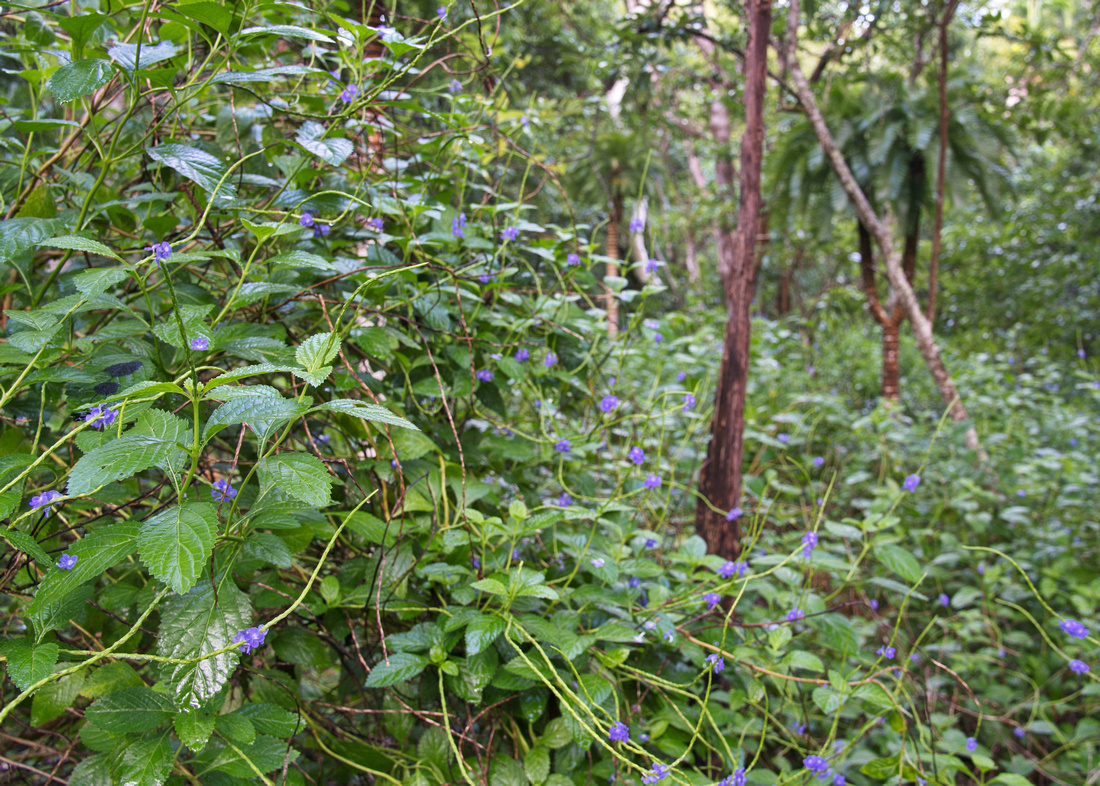Pulling a thousand a day
The bush parts of the block - about 90% of its 80 acres - are a mixture of different types of terrain. The areas near the permanent springs are classified as evergreen monsoon vineforests (which, in look and feel, are about as close as the Top End gets to the tropical rainforests of the east coast).

 Away from the springs, in areas that are inundated in the Wet season, but dry out completely by May or June, are dense tracts of paperbarks and pandanus.
Away from the springs, in areas that are inundated in the Wet season, but dry out completely by May or June, are dense tracts of paperbarks and pandanus.


The vineforest and paperbark swamps are home to an amazing variety of birdlife. Although the composition of the orchestra changes with the seasons, it performs every day of the year, saving its best for dawn and dusk (there's a sample in the youtube video below).
Some days, the birdsong is interrupted mid-morning by a loud and distinctly unmelodious human exclamation.
It is me, yelling out in a ridiculously theatrical and drawn out fashion "OOOOOONE HUNNNNN-DRED AND EIGHT-TEEEE!!!"
It's a throwback to my university days, when one of my many (many) ways of wasting time was to watch English darts tournaments on TV - usually with a bunch of other blokes with similar devotion to their studies. We quickly learned to join in with the referee's overblown exclamations whenever someone threw three consecutive triple-twenties. Inevitably, a cry of '180!' became the standard acknowledgement of any sort of a win (whatever the context) and, generally speaking, the bar for a 'win' tended to get lower the longer the night went on.
****
This is snake weed.


It's quite an attractive shrub and I imagine it spent its first few years after arriving in Australia (when it doubtless had a nicer name) looking decorative in gardens from northern New South Wales to far North Queensland.
Unfortunately it was also pretty good at jumping fences and now it infests rural properties right across tropical Australia, including ours.
Most is in the paperbark* swamp and around the fringes of the springs; but only the darkest, shadiest, parts of the block are completely spared. (*In an appalling irony, snake weed is a native of the tropical Americas where Australian paperbarks are a noxious weed.)
It takes over clearings and is so good at establishing itself - it produces flowers and seeds all year - that the native plants that are meant to be there cannot get a foothold.

 It also provides shelter and cover and to other unwelcome visitors to the block - notably feral pigs and cats - and cane toads.
It also provides shelter and cover and to other unwelcome visitors to the block - notably feral pigs and cats - and cane toads.
It does have some redeeming features - at least when compared with many other weeds.
It is not prickly or sticky and it doesn't make you itch.
It's also quite shallow rooted - even the more established plants, which can be two metres high and at least as wide, will usually yield to a firm and sustained tug [insert crude bloke joke here].
Snake weed has been my main day job since we bought the block. When conditions permit (access can be a problem in the Wet), I try and spend at least a few hours several days a week 'pulling snakies'.
I actually really enjoy it. It's very good low-impact exercise and - apart from dehydration and the odd ant bite or wasp sting - the risks are minor. It's also pretty mindless so there's plenty of the time for the mind to wander.
The scale of the task is enormous - I'd guess that maybe half of the forested areas have been affected - but we have made some real progress in our first year.
A big motivator is that the transformation as an area is cleared is immediate and can be stunning. This time lapse should give you an idea.
The work we've done in the paperbark forest has also made that area much safer in the Wet season. This time last year, visibility was often limited to a few metres - a bit unnerving in an area where pigs are common and crocs are not out of the question. Now, there are clear lines of sight for 20 or more metres. (I will do a separate post about a close call with a herd of pigs.)
When I first got started, I set myself the lofty task of pulling a thousand snakies a day. I've only reached that mark a couple of times (usually courtesy of patches of tiny seedlings - they all count) but 400 to 500 is the usual mark.
And, every session - revelling in the unselfconscious silliness that isolation permits - I celebrate number 180 by raucously channelling the darts referees of my youth.